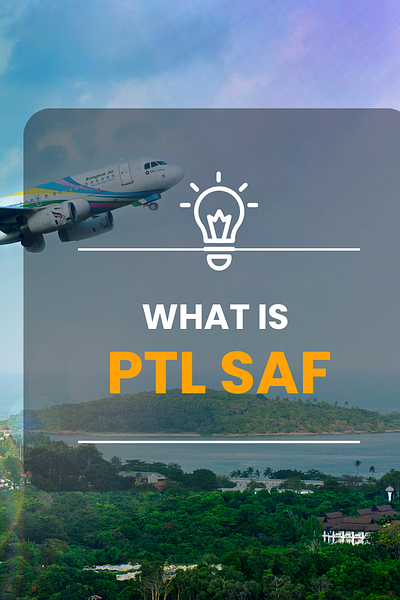What is Power-to-Liquid (PtL) SAF?
Power-to-Liquid (PtL) SAF will be a game-changer for the aviation industry.
We’ve seen pretty aggressive shifts toward Power-to-Liquid (PtL) SAF over the last year as more SAF obligations specific to PtL appear. Here’s why it’s a game-changer for aviation:
What is Power-to-Liquid (PtL) SAF?
PtL SAF is an advanced synthetic fuel produced using:
Renewable electricity
Green hydrogen
Captured carbon dioxide (CO2)
And what about its process?
Step 1️⃣: Electrolysis
Water is split into hydrogen and oxygen using renewable energy.
Step 2️⃣: Capturing CO2
CO2 in the atmosphere is captured via Direct Air Capture (DAC) technologies.
Step 3️⃣: Synthesizing PtL SAF
Combining hydrogen and CO2 via chemical processes (e.g. Fischer-Tropsch).
Okay but why is it so popular?
💡The greenhouse gas reduction potential is UNMATCHED.
PtL SAF can achieve 90% lifecycle greenhouse gas emissions reduction. 90%! That’s way more than what HEFA and ATJ SAF can do. And that’s because using renewable energy and captured CO2 can be seen as climate neutral.
By capturing CO2 from the atmosphere, it’s akin to capturing CO2 produced from the combustion of SAF. This means NO ADDITIONAL EMISSIONS as we’re using CO2 already present in our atmosphere.
💡Minimal competition for raw materials.
Unlike bio-based SAFs, PtL SAF does not compete with food production or require a lot of land.
It utilizes already abundant resources (i.e. water, CO2) and thereby provides a more scalable and sustainable solution.
What’s brewing in the PtL SAF space today?
The development of PtL SAF is progressing rapidly, with several pilot projects and commercial initiatives underway. Recent mandates (i.e. UK SAF mandates) are starting to introduce PtL obligations too.
But there’s an issue…
🚨Aside from PtL SAF generally not being ASTM-certified yet, it’s around 8 times more expensive than conventional jet fuel and here’s why:
Procuring green hydrogen is expensive
Procuring captured CO2 via direct air capture is expensive
As you can see, everything boils down to the COST and the technologies used to produce PtL SAF are still in their nascent stage. Once it matures, it’s expected for these technologies to be more affordable such that using PtL SAF would actually be economical (fingers crossed!).
🎯But one thing’s for sure: PtL SAF is the FUTURE of a decarbonized aviation sector.
💡Here’s a downloadable PDF file on PtL SAF:
If you want to chat about anything SAF, drop me a message on LinkedIn! 📩
Think this post could benefit someone? Send it their way now!




